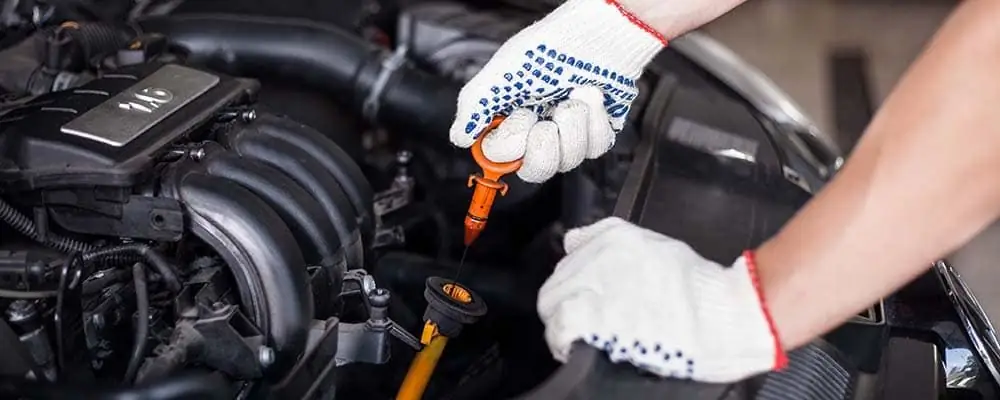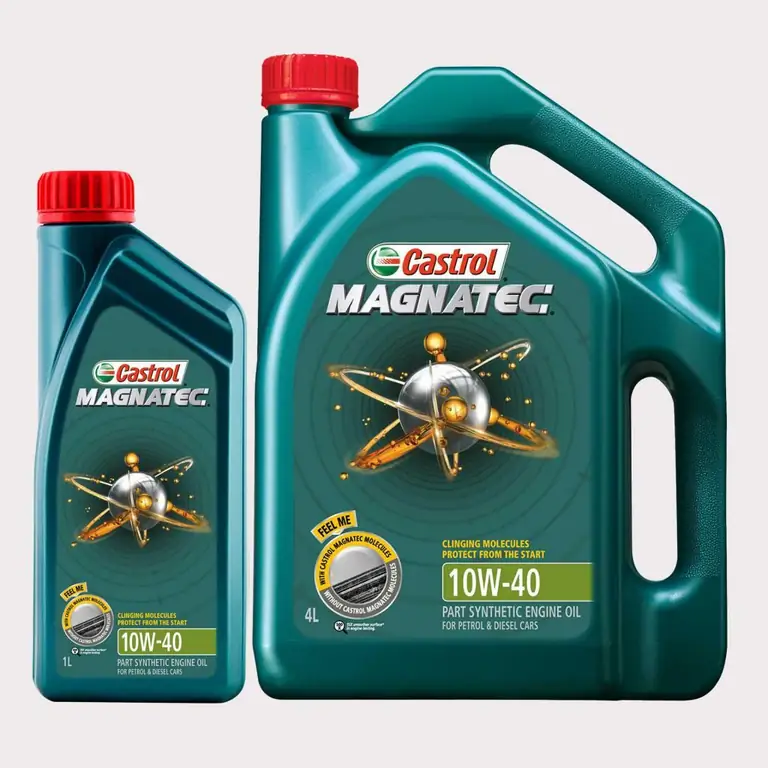2025 Author: Erin Ralphs | [email protected]. Last modified: 2025-01-22 21:14:16
Many Japanese motors from the turn of the last century are renowned for their reliability and performance, and are still in use today. The most popular are Toyota JZ engines. Although they were not the most common in the manufacturer's model range, these motors have found use for swapping on a variety of vehicles, from compact sports cars to SUVs and commercial vans. This article discusses their design features and specifications.
General Features
JZ engines replaced the M series in 1990. These are 6-cylinder in-line power units with a DOCH cylinder head (24-valve, two camshafts). The phase of the camshafts is 224/228 °, the lift is 7, 69/7, 95. These motors have a timing belt drive, a cast-iron block, an aluminum cylinder head, an injection power system.
1JZ
The main difference between the new engines introduced in 1990 and the M series is the short-stroke pistons (71.5 mm stroke is less than the cylinder diameter (86 mm)). 2.5L 1JZ is available in three versions.
1JZ-GE
This is the initial atmosphericmodification.
The motors of the first series, produced from 1990 to 1995, developed a power of 180 hp. With. at 6000 rpm and 235 Nm of torque at 4800 rpm.

After the modernization of 1995, the connecting rods were changed, the cylinder head was finalized, the distributor ignition was replaced with a coil one (2 candles per coil). In addition, the updated engine was equipped with a VVT-i system that smoothed out the torque curve. As a result, the compression ratio has increased from 10:1 to 10.5:1, and performance has increased to 200 hp. With. and 251 Nm at 6000 and 4000 rpm respectively.
The following Toyota models were equipped with this engine: Brevis, X80 - X110 Mark II, X80 - X100 Cresta, X80 - X100 Chaser, Progres, S130 - S170 Crown.
1JZ-GTE
Represented by a turbocharged version of the engine discussed above. Built according to the "twin-turbo" scheme based on two CT12A turbines and equipped with an intercooler (can be installed on the side or in the front). This motor retains the same bore and stroke as the 1JZ-GE and has an 8.5:1 compression ratio. The cylinder head was finalized, and the ShPG was replaced. Judging by the logos on some elements (for example, on the timing belt cover), it is assumed that Yamaha took part in the development (possibly cylinder head) or production of this engine. It develops 276 hp. With. at 6200 rpm and 363 Nm at 4800 rpm.

The motors of the first series are characterized by the inherent smoothness of in-line "sixes", good "torsion" provided by short-stroke pistons, and quick pickup of smallturbines.
However, turbocharging proved to be their weak point. First, the ceramic wheels that the CT12A is equipped with are prone to delamination at high rpm and high temperatures, which is especially evident during boost-ups. Secondly, on early Series I engines, malfunctions of the crankcase ventilation valve on the valve cover occurred, which led to their entry into the intake manifold.
Together with gases, a significant amount of oil vapor from the oil separator located under the valve cover entered the turbines, wearing out the seals. Later engines fixed this problem, and early engines in the domestic market were recalled for repair by replacing the PCV valve with a part from the 2 JZ engine.
II The 1JZ-GTE series was introduced in 1996. It was based on the BEAMS architecture and received a modified cylinder head, VVT-i, modified water jackets to improve cylinder cooling, titanium nitride coated gaskets to reduce cam friction.
Thanks to VVT-i and improved cylinder cooling, the compression ratio increased from 8.5:1 to 9. Two turbines were replaced with one CT15B, increasing boost efficiency due to smaller cylinder head outlets, as a result of which gases began to exit at a faster rate and spin the turbine faster. A significantly more powerful boost system, combined with a different manifold and exhaust ports, provided an increase of more than 50% torque at low revs.
The maximum value of this indicator is 379 Nm, and it is already reached at 2400 rpm (powerremained at the same level due to the restrictions on the Japanese car industry at that time). Fuel consumption has been reduced by 10% due to increased efficiency.

1JZ-GTE was used on the following Toyota models: Mark II (X80 - X110), Verossa, X80 - X100 Cresta, S170 Crown, Z30 Soarer, A70 Supra, X80 - X100 Chaser.
1JZ-FSE
This engine was introduced in 2000. It was designed to achieve the best environmental performance without sacrificing performance. The motor was equipped with a cylinder block from 1JZ-GE and a specially designed cylinder head D4. It turned out to be narrower and was equipped with vertical inlets and swirl nozzles. This made it possible to run the engine at a very lean mixture of 20:1 - 40:1 at certain speeds and loads.
In addition, the engine has a special fuel pump, pistons with a recess on the bottom, an electronic accelerator, a multi-stage system of converters. The compression ratio is 11:1. As a result of these modifications, a reduction in fuel consumption by about 20% was achieved. At the same time, performance remained almost the same as that of the 1JZ-GE with VVT-i (197 hp and 250 Nm).

This JZ direct injection engine was installed in S170 Crown, X110 Mark II, Progres, Brevis, Verossa.
2JZ
The second motor of the series was released in 1991. It was based on the 1JZ architecture, using cylinders of the same size and height. However, the engine has significant differences from the 1JZ. Main consistin a volume increased to 3 liters and a square geometry (equal cylinder diameter and piston stroke (86 mm)). In addition, the cylinder block plate is thicker and the pistons are longer for 14.5 mm more stroke. This motor is available in the same variants as the 1JZ.
2JZ-GE
The power of atmospheric modification is 212 - 227 hp. With. at 5000 - 6800 rpm, torque - 283 - 298 Nm at 3800 - 4800 rpm.
The compression ratio has been increased from 10:1 to 10, 5:1 compared to the 1JZ-GE without VVT-i.

The 2JZ received a variable valve timing system in 1997. These versions are also equipped with a DIS instead of a conventional ignition distributor.
This engine was installed on Toyota Mark II (X90, X100), XE10 Altezza (Lexus IS), S130 - S170 Crown, S140 - S170 Crown Majesta, S140, S160 Aristo (Lexus GS), Origin, X90, X100 Cresta, Progres, X90, X100 Chaser, Z30 Soarer (Lexus SC), A80 Supra, Brevis.
2JZ-GTE
The turbocharged version was created as an alternative to Nissan's 1989 RB26DETT, which was a big hit in motorsport. The engine retained the main design features of the 2JZ-GE. The differences are deepened piston heads to lower the compression ratio to 8.5:1, oil nozzles to improve piston cooling, a modified cylinder head (redesigned intake and exhaust ports, cams, valves). The motor has camshafts with a phase of 224/236 ° and a lift of 7, 8/7, 4 mm. It is equipped with a twin-turbo supercharging system based on two Hitachi CT20A turbines with an intercooler. Performance is276 l. With. and 435 Nm at 5600 and 4000 rpm respectively.

In 1997, the 2JZ-GTE received VVT-i, which increased the torque to 451 Nm. At the same time, unlike the 1JZ-GTE, the pressurization system was left unchanged.
It should be noted that in the European and North American markets, a capacity of 321 hp was announced. With. instead of 276 liters. With. This is due not only to the "gentlemen's agreement" of automakers in Japan, but also to some design differences in export engines: stainless steel CT12B turbines instead of ceramic CT20, modified camshafts with a phase of 233/236 ° and a lift of 8.25/8.4 mm, more efficient nozzles (550 instead of 440 cm3).
The motor was produced until 2002. It was equipped with the S140, S160 Aristo and A80 Supra.
2JZ-FSE
Built on the same direct injection pattern as the 1JZ-FSE and has an even higher compression ratio (11, 3:1). In terms of performance, it also corresponds to the atmospheric version of the 2JZ-GE: 217 hp. s., 294 Nm.

This engine was installed on Toyota Brevis, Progres, S170 Crown.
Operation and maintenance
The considered JZ engines are similar in terms of reliability and weaknesses.
The timing belt needs to be changed every 100 thousand km. When it breaks, the valve does not bend (except FSE). In addition, due to the lack of hydraulic compensators, the valves are adjusted at the same frequency if necessary. Oil change is carried out every 10 thousand km (recommended 2 times more often).
Typical problems include floodingcandles during washing, tripping (may be caused by flooded candles, faulty coils, VVT-i valve), floating speed (VVT-i valve, idle sensor, clogged throttle), increased fuel consumption (oxygen sensor, filters, mass air flow sensor), knocking (VVT-i clutch, unadjusted valves, connecting rod bearings, belt tensioner bearing), increased oil consumption (solved by replacing valve stem seals and rings or the entire motor). Also weak points are the pump, viscous coupling and injection pump FSE (resource 80 - 100 thousand km).
1GZ-GE can be bought for 30 - 40 thousand rubles, and for about 100 thousand - a turbocharged JZ engine. The price of 2JZ is 50 - 70 thousand. 2JZ-GTE costs about 150 thousand
In general, Toyota JZ engines are among the most reliable in the global automotive industry. Their resource is more than 400 thousand km. This is due to a large margin of safety, which also determines the potential for tuning. In view of this, these engines have not only become popular for everyday use, but also achieved great success in motorsport.
Recommended:
Hyundai engine oil: overview, types, specifications and reviews

Hyundai Solaris is assembled in Russia, which significantly reduces their cost. Now it is the most common car in our country. What kind of oil can be poured into the Hyundai Solaris so that the car serves properly and the driver does not have unpleasant situations on the roads
Castrol 10W40 engine oil: overview, specifications

Castrol 10W40 oil is a European quality product for Russian roads. Semi-synthetic all-weather lubricant withstands maximum temperature fluctuations, provides reliable engine protection, lubricating all structural elements. Has a unique manufacturing technology
Castrol Edge 5W30 engine oil: overview and specifications

Castrol Edge 5W30 is formulated with the latest unique technology. This line of lubricant product includes both universal lubricants and highly specialized oils. The products of the English company Castrol are of high quality and stable characteristics
Toyota 0W30 engine oil: overview, specifications

Toyota 0W30 oil is produced by the automobile concern of the same name. It is made on a synthetic basis and has unique quality characteristics. Conforms to all norms and standards imposed on this class of products by specialized organizations
M8V engine oil: overview, specifications

M8B engine oil is a group of lubricants from various domestic manufacturers. This lubricant was made back in the former Soviet Union and was used in automotive power units with gasoline and diesel power supplies. Since that time, the oil has undergone some changes to meet the modern requirements of high-tech devices

